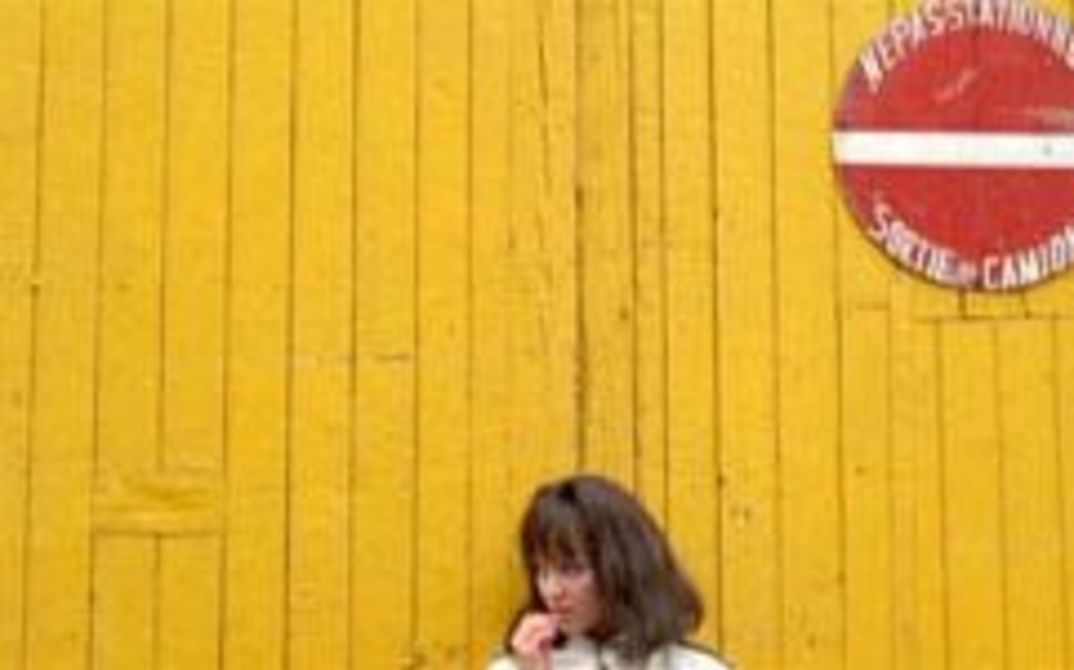LOLA MONTEZ (Max Ophüls, F/D 1955, 1. & 5.4.) Ophüls’ only Cinemascope film was also his last. In a huge circus arena, the dancer Lola Montez, who is disappointed with life, performs the most important passages of her past to a curious audience. The flashbacks, which Ophüls combines masterfully with one another, at different levels of style and plot, develop a complex dramaturgy, as does the use of color. “Everything good in LOLA happened because of my inexperience with color and CinemaScope.” (Max Ophüls)
MADE IN U.S.A. (Jean-Luc Godard, France/Italy 1966, 3. & 6.4.) Paula Nelson (Anna Karina) travels from Paris to Atlantic City to find out what happened to her fiancé - she refuses to believe that he died of a heart attack as she has been told. She has reason to believe that he was murdered and meets both police officers and crooks who either try to help or put a spanner in the works. Godard’s tribute to “The Big Sleep” and American film noir over-caricatures its characters humorously, creating an effective tableau with gloriously colorful Cinemascope pictures.
MANHATTAN (Woody Allen, USA 1978, 2.4.) One might think that the vertical lines of Manhattan's architecture that stretch to the sky and the CinemaScope's widescreen horizontal cinematic image should not be brought together but the cameraman Gordon Willis tackled this fundamental conflict, for example with the "Rhapsody in Blue" sequence, and at the same time set new standards for representing New York. MANHATTAN is the ultimate declaration of love to this famous borough, which provides the perfect backdrop for depicting the mid-life crisis of a twice-divorced television writer seeking love and understanding.
FORTY GUNS (Sam Fuller, USA, 1957, 2.4.) Barbara Stanwyck plays an authoritarian "high riding woman with a whip" who defends her vast swathes of land and wealth with 40 hired guns only to leave everything behind in the end. Sam Fuller and the film's cameraman Joseph Biroc look beyond the scenic black and white images of classic Westerns settings (saloons, the sheriff's office, barns and streets) for their pictorial compositions that reproduce the protagonists' perceptions and experiences in an unsettling manner.
LAWRENCE OF ARABIA (David Lean, GB 1962, 4.4.) This monumental masterpiece in spectacular CinemaScope is based on the life of the British lieutenant T.E.Lawrence whowas involved in the Arab insurgency against Turkish rule during the First World War. Peter O'Toole goes from being a young lieutenant stationed in Cairo to a victorious desert general, equipped with money and arms from British HQ and revered like a god by his Arab allies, before his dream of a united Arabia founders dramatically. Lawrence remains mysterious, an individualist who is tormented by demons at night, whose emotional states seem to be reflected in the gigantic desert landscapes.
EUROPA (Lars von Trier, Denmark/Sweden/G/F/CH 1991, 6.4.) The last part of von Trier's Europa trilogy, a cross between melodrama, thriller and disaster movie, mainly takes place on a train where a young naïve American of German descent is a conductor trying to help reconstruct Germany. Working with Andrzej Wajda's cameraman Edward Klosinsky, von Trier intensively employs superimpositions, back projections, double and multiple exposures so that spaces merge into a single one without borders.
DER GETEILTE HIMMEL (Divided Heaven, Konrad Wolf, GDR 1964, 7.4.) Past and present, city and village, demands and realities, work and study – East and West. Opposites and contradictions are part and parcel of the student Rita's daily existence. When she has a nervous breakdown, she looks back on her life until now: her love for the chemist Manfred, his "flight from the republic", and her short visit to West Berlin, and her return to the GDR. Using extensive flashbacks, Wolf – who based his film on Christa Wolf's eponymous novel – develops a critical portrayal of the GDR in CinemaScope, without lofty enthusiasm but instead with a much more recognizable dose of skepticism.
PROVERKA NA DOROGACH (Checkpoint, Alexei German, USSR 1971/1986, 8.4.) In 1971, it would have been absolutely unthinkable to make a Soviet film about a Red Army soldier taken prisoner by the Germans in the Second World War who becomes an auxiliary policeman for them before joining the partisans. German's first feature was banned for 15 years but was screened when Gorbachev introduced his Glasnost reforms. German's uncomfortable plea for humanity, irrespective of ideological categories, is marked by long black-and-white CinemaScope takes and frequent close-ups that lend the film a calm flowing feel, which in parts is almost lyrical.
SHOTGUN STORIES (Jeff Nichols, USA 2007, 8.4.) Cotton plantations and fields as far as the eye can see – Nichols wanted the viewer to see the landscapes of his home state Arkansas, which provides the location for his debut, exactly as he had - in CinemaScope. Against a backdrop of vast landscapes and with an oppressive sense of immediacy, an ancient family feud unfolds among half-brothers who meet for the first time in years at their father's funeral. Revenge, guilt and atonement are the central themes of this laconic Western that has been transposed to the present.



